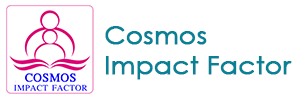
Journal Basic Info
- Impact Factor: 1.809**
- H-Index: 6
- ISSN: 2474-1655
- DOI: 10.25107/2474-1655
Major Scope
- Sleep Medicine and Disorders
- Endocrinology
- Physical Medicine & Rehabilitation
- Dentistry and Oral Biology
- Anesthesiology and Pain Medicine
- Physiology
- Genetics
- Asthma
Abstract
Citation: Ann Clin Case Rep. 2024;9(1):2553.DOI: 10.25107/2474-1655.2553
Case Report of Three Co-Expression Gene Mutations in Pediatric AML Treated with Chemotherapy Combined with Haploid Conjugated Hematopoietic Stem Cell Transplantation
Nie Q1,2, Tian X1, Xiao Z1, Chen X3 and Liu L1,4*
1Department of Hematology, Kunming Children’s Hospital, China
2School of Clinical Medicine, Dali University, China
3Kunming Kingmed Institute for Clinical Laboratory Co., Ltd, China
4Department of Pediatrics, Qujing Medical College, China
PDF Full Text Case Report | Open Access
Abstract:
Background: In pediatric Acute Myeloid Leukemia (AML), the co-expression of NUP98/NSD1, FLT3/ITD, and WT1 constitutes a rare and complex genetic mutation profile, typically showing low responsiveness to chemotherapy alone and difficulty in achieving remission with the addition of targeted therapies. This case report introduces a combined transplantation treatment approach, exploring therapeutic options for this challenging AML subtype. Methods: We reported on a pediatric patient with AML exhibiting co-expression of NUP98/NSD1, FLT3/ITD, and WT1 who failed to achieve remission after multiple courses of chemotherapy and targeted therapy. The patient subsequently underwent an innovative treatment consisting of Haploidentical allogeneic Hematopoietic Stem Cell Transplantation (Haplo-HSCT) supported by umbilical cord blood. Results: Post-Haplo-HSCT, the patient achieved a complete molecular remission for 12 months, a remarkably rare occurrence in such cases. Bone marrow pathology and Minimal Residual Disease (MRD) analysis corroborated this significant and sustained therapeutic effect. Conclusion: This case demonstrates that for pediatric AML patients with a specific combination of genetic mutations, a novel curative approach combining chemotherapy with innovative Haplo- HSCT treatment can be established. The findings provide valuable clinical insights for future treatment protocols of this AML subtype and could potentially influence therapeutic strategies for similar cases.
Keywords:
Pediatric; AML; FLT3/ITD; NUP98/NSD1; WT1; Haplo-HSCT
Cite the Article:
Nie Q, Tian X, Xiao Z, Chen X, Liu L. Case Report of Three Co-Expression Gene Mutations in Pediatric AML Treated with Chemotherapy Combined with Haploid Conjugated Hematopoietic Stem Cell Transplantation. Ann Clin Case Rep. 2024; 9: 2553..













